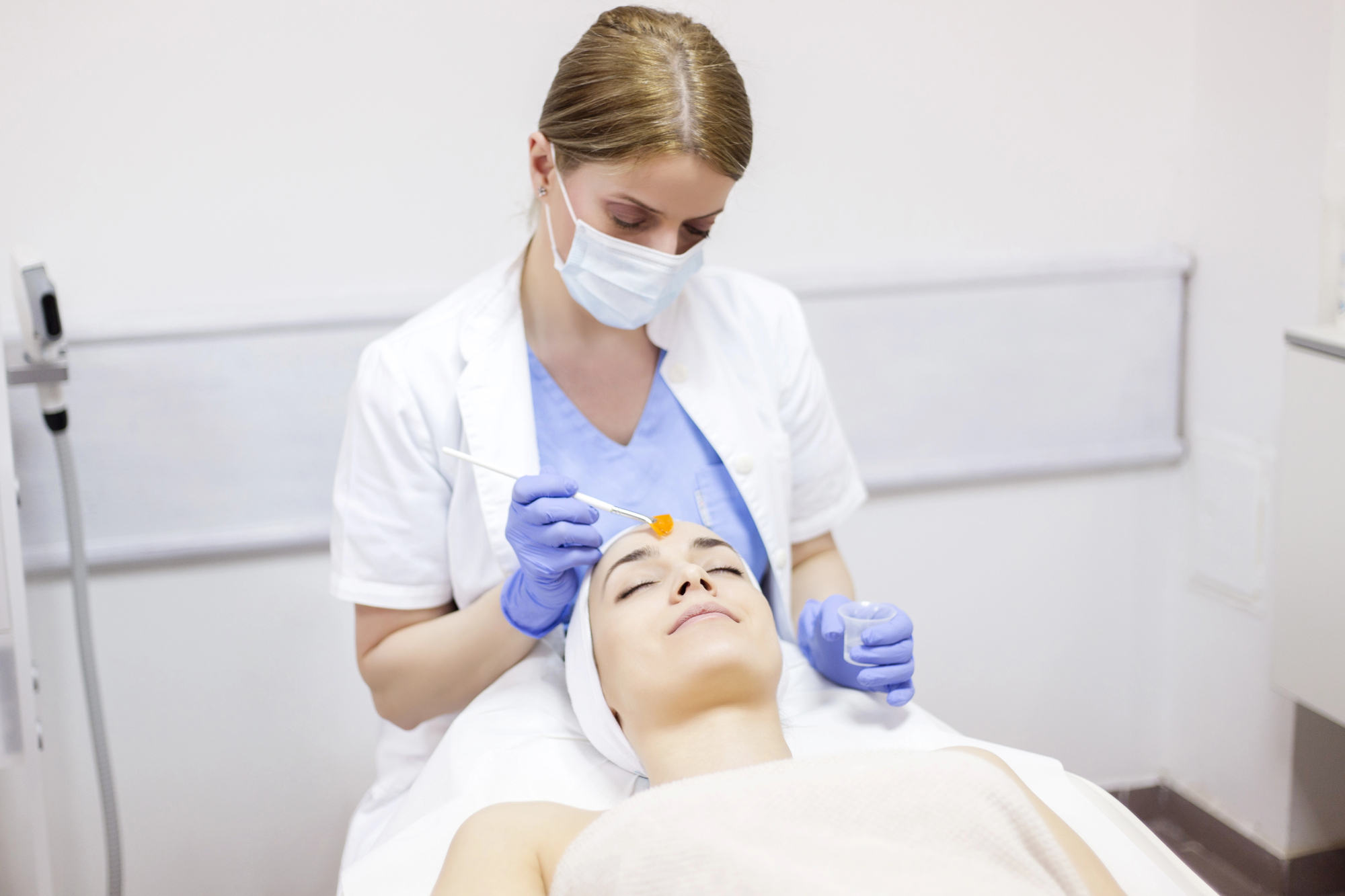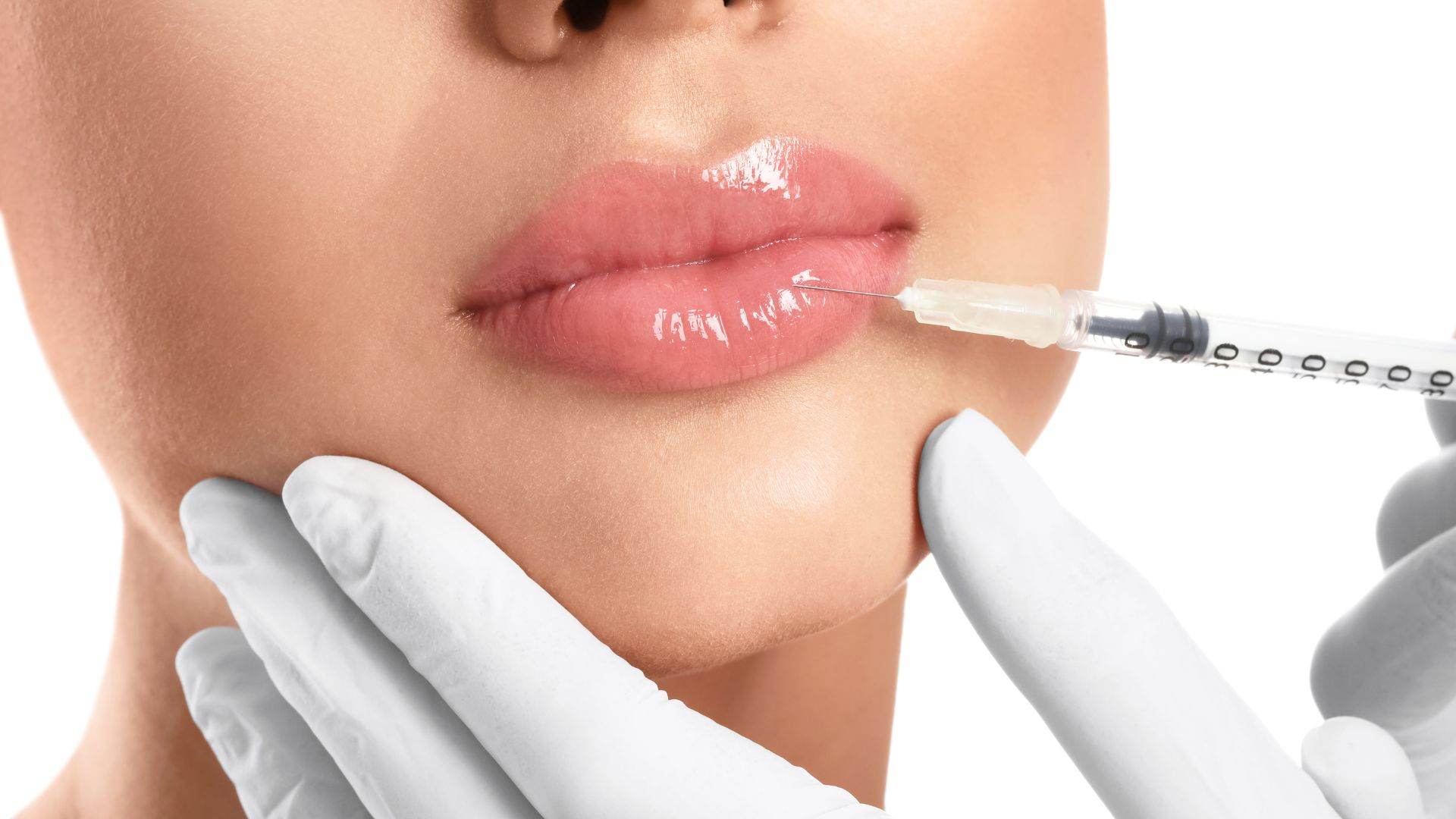
Chemical Peel for Acne Scars: A Must-Have Skill for Medical Aesthetic Professionals
Acne scars can significantly impact a patient’s confidence and self-esteem, leading many to seek effective, non-invasive treatments. Chemical peels have emerged as a popular solution, offering promising results in skin rejuvenation.
According to Acne.org, chemical peels can reduce acne scars by up to 75%. The global chemical peel market reflects this growing demand, with a valuation of USD 1.76 billion in 2021 and an expected compound annual growth rate of 5.5% through 2030 as reported by Grand View Research.
Medical professionals play a crucial role in administering these transformative treatments, ensuring safety and efficacy for patients seeking to improve their skin’s appearance.
In this article, we’ll explore:




- The science behind a chemical peel for acne scars
- Types of chemical peels and their suitability for various skin concerns
- The importance of professional training in administering chemical peels
- How Aesthetics Medical Training (AMT) supports practitioners in mastering these techniques

Understanding the Science Behind a Chemical Peel for Acne Scars
Chemical peels are a cornerstone in skin rejuvenation, effectively addressing various concerns, including acne scars. By applying a chemical solution, these cosmetic treatments exfoliate dead skin cells, promoting the regeneration of healthier skin.Mechanism of Action:
- Exfoliation: Chemical peels for acne scarring remove the outermost layers of skin, eliminating dead cells and revealing fresher skin beneath.
- Collagen Production: The peeling process stimulates collagen production, enhancing skin texture and reducing the appearance of scars.
Effectiveness in Treating Acne Scars:
- Atrophic Scars: Characterized by depressed areas, these scars respond well to medium-depth peels, such as those using trichloroacetic acid (TCA).
- Hyperpigmentation: Superficial peels with glycolic or salicylic acid effectively lighten dark spots resulting from acne.
Supporting Evidence:
- A systematic review in the Journal of the American Academy of Dermatology found that medium to deep chemical peels achieved an average improvement of 53.3% in acne scarring.
- The British Medical Journal highlighted that chemical peels significantly reduce acne lesions, underscoring their role in comprehensive acne treatment.
Considerations When Getting a Chemical Peel for Acne Scars:
- Skin Type: Individuals with darker skin tones may have a higher risk of post-inflammatory hyperpigmentation; selecting the appropriate type of chemical peel is crucial.
- Recovery Time: Downtime varies with peel depth; lighter peels have minimal recovery periods, while deeper peels require more extensive healing.

Types of Chemical Peels for Acne Scarring
Chemical peels are a versatile treatment for acne conditions, offering varying depths to address specific skin concerns. Understanding the distinctions between different types of peels is essential for selecting the most appropriate approach for each patient. Here is each type of peel available on the market.Superficial Peels:
- Description: Utilize mild acids like glycolic acid or salicylic acid to exfoliate the outer layers of the skin.
- Targeted Concerns: A light peel is effective for mild acne scars, uneven skin tone, and superficial hyperpigmentation.
- Recovery Time: Minimal downtime; patients can typically resume normal activities immediately.
- Suitability: Light chemical peels are ideal for individuals with sensitive skin or those seeking gradual improvement.
Medium-Depth Peels:
- Description: Employ trichloroacetic acid (TCA) to penetrate the middle layers of the skin.
- Targeted Concerns: A medium chemical peel for acne scarring addresses moderate acne scarring, deeper wrinkles, and more pronounced hyperpigmentation.
- Recovery Time: Approximately one to two weeks, with potential redness and peeling.
- Suitability: Medium peels are beneficial for patients with atrophic scars seeking more significant results.
Deep Peels:
- Description: Use potent agents like phenol to reach the deeper layers of the skin.
- Targeted Concerns: Treat deep scars, deep wrinkles, and extensive sun damage.
- Recovery Time: Extended healing period, often several weeks; requires diligent aftercare.
- Suitability: Recommended for fair skin tones due to potential risks of hypopigmentation in darker skin.
What Chemical Peels Are Best for Acne Scars
- Skin Type and Tone: Superficial peels are generally safe for all skin types, including dark skin tones. Medium and deep peels for acne scarring necessitate careful consideration to minimize the risks of post-inflammatory hyperpigmentation.
- Scar Severity: Superficial peels suit mild scarring, while medium-depth peels are more effective for moderate to severe atrophic scars.
- Patient Preferences: Factors such as desired recovery time and tolerance for potential side effects should guide peel selection.
Efficacy and Considerations:
- According to the CID Journal, superficial peels, like glycolic acid peels, have demonstrated effectiveness in reducing acne lesions and post-acne hyperpigmentation.
- Patients with darker skin tones should consult with experienced dermatologists to determine the safest and most effective peel type, as deeper chemical peels carry a higher risk of pigmentation changes.

The Role of Medical Professionals in Administering Peels for Acne Scarring
Administering chemical peels for acne scars requires the expertise of trained medical professionals to ensure both safety and effectiveness. Here’s why professional oversight is crucial:Ensuring Safe and Effective Results
- Expert Assessment: Skin care professionals can accurately evaluate the severity and type of acne scars, such as atrophic acne scars or post-inflammatory hyperpigmentation, to determine the most appropriate chemical peel treatment.
- Customized Treatment Plans: Professionals tailor the concentration and type of chemical solution—like glycolic acid, salicylic acid, or trichloroacetic acid (TCA)—to the patient’s specific skin type and concerns, optimizing outcomes.
- Monitoring and Management: Trained practitioners can identify and manage potential adverse reactions, ensuring patient safety throughout the procedure.
Addressing Common Patient Concerns
- Managing Expectations: Professionals provide realistic expectations regarding the results of chemical peels for acne scars, explaining that multiple sessions may be necessary for optimal improvement.
- Explaining Aftercare: Proper aftercare is vital to the healing process. Patients are advised to avoid direct sun exposure and use broad-spectrum sunscreen to prevent complications like hyperpigmentation.
Conducting Thorough Patient Assessments
- Medical History Review: Evaluating a patient’s medical history, including any history of scarring or cold sores, helps in planning the treatment and mitigating risks.
- Skin Type Consideration: Understanding the patient’s skin type and color is essential, as certain chemical peel solutions may pose higher risks for individuals with darker skin tones.
Benefits of Mastering Chemical Peels for Acne Scars in Your Practice
Learning what chemical peels are best for acne scars and integrating them into your practice can significantly enhance your service offerings and meet the growing demand for effective acne scar treatments. Here’s how mastering chemical peels for acne scars can benefit your practice:- Expanded Treatment Portfolio: Offering chemical peels for acne scarring allows you to address various skin concerns, including acne scars, hyperpigmentation, and uneven skin tone, providing patients with comprehensive skincare solutions.
- Increased Patient Satisfaction: Chemical peels have demonstrated efficacy in improving acne scars. A systematic review highlighted that patients receiving chemical peels showed significant improvement in acne vulgaris. Providing such effective treatments can lead to higher patient satisfaction and loyalty.
- Meeting Rising Demand: According to Cognizance Market Research, the global acne scar treatment market is projected to reach USD 10.08 billion by 2030, growing at a CAGR of 6.4%. Offering chemical peels positions your practice to capitalize on this increasing demand.
- Cost-Effective Treatment Option: According to Dermatology Times, chemical peels are more affordable than laser treatments, with average costs of $519 compared to $1,445 for non-ablative lasers. Providing a cost-effective solution can attract a broader patient base.

Master the Chemical Peel for Acne Scars: Expand Your Skills with Aesthetics Medical Training in Reno, NV
At Aesthetics Medical Training (AMT) in Reno, NV, we are committed to helping medical professionals master the art and science of chemical peel treatments. As the demand for effective solutions like chemical peels for acne scars grows, AMT provides the tools and knowledge needed to excel in this transformative field.Why Partner with AMT to Get Your Chemical Peel Certification
- Comprehensive Training Options: AMT offers virtual classes and hands-on workshops covering a wide range of peels, from light chemical peels to deep peels using trichloroacetic acid or phenol peels, ensuring you’re equipped to treat varying skin concerns.
- Personalized Education: Learn how to tailor treatments to individual skin types, including addressing dark spots, uneven skin tone, and atrophic scars like ice pick scars and rolling scars.
- Cutting-Edge Techniques: Master the chemical peel process, including collagen production stimulation, addressing layers of skin, and selecting the right type of peel for patients with oily or acne-prone skin or darker skin tones.
- Patient-Centered Approach: Our training emphasizes safety, patient comfort, and effective outcomes, ensuring you can address common concerns like recovery time, post-inflammatory hyperpigmentation, and sensitive skin care.
Empowering Your Practice
AMT doesn’t just teach cosmetic procedures and techniques; we empower healthcare professionals to build thriving practices. By mastering chemical peels for acne scars and other types of aesthetic procedures, such as laser hair removal, dermal fillers, and Botox, you’ll offer patients life-changing results and establish long-term trust. Take your practice to the next level with AMT—where expertise meets opportunity. Learn more about what chemical peels are best for acne scars and how AMT can support your journey in aesthetic medicine! Get in touch today.
Thinking About Advancing Your Aesthetics Skills?
Contact our team today to learn how our training programs and cutting-edge technology can support your journey. Fill out the form or give us a call to get started.



